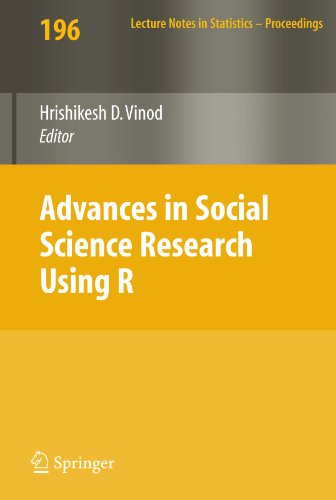

Most ebook files are in PDF format, so you can easily read them using various software such as Foxit Reader or directly on the Google Chrome browser.
Some ebook files are released by publishers in other formats such as .awz, .mobi, .epub, .fb2, etc. You may need to install specific software to read these formats on mobile/PC, such as Calibre.
Please read the tutorial at this link: https://ebookbell.com/faq
We offer FREE conversion to the popular formats you request; however, this may take some time. Therefore, right after payment, please email us, and we will try to provide the service as quickly as possible.
For some exceptional file formats or broken links (if any), please refrain from opening any disputes. Instead, email us first, and we will try to assist within a maximum of 6 hours.
EbookBell Team

4.3
58 reviewsThis book covers recent advances for quantitative researchers with practical examples from social sciences. The twelve chapters written by distinguished authors cover a wide range of issues--all providing practical tools using the free R software.
McCullough: R can be used for reliable statistical computing, whereas most statistical and econometric software cannot. This is illustrated by the effect of abortion on crime.
Koenker: Additive models provide a clever compromise between parametric and non-parametric components illustrated by risk factors for Indian malnutrition.
Gelman: R graphics in the context of voter participation in US elections.
Vinod: New solutions to the old problem of efficient estimation despite autocorrelation and heteroscedasticity among regression errors are proposed and illustrated by the Phillips curve tradeoff between inflation and unemployment.
Markus and Gu: New R tools for exploratory data analysis including bubble plots.
Vinod, Hsu and Tian: New R tools for portfolio selection borrowed from computer scientists and data-mining experts; relevant to anyone with an investment portfolio.
Foster and Kecojevic: Extends the usual analysis of covariance (ANCOVA) illustrated by growth charts for Saudi children.
Imai, Keele, Tingley, and Yamamoto: New R tools for solving the age-old scientific problem of assessing the direction and strength of causation. Their job search illustration is of interest during current times of high unemployment.
Haupt, Schnurbus, and Tschernig: Consider the choice of functional form for an unknown, potentially nonlinear relationship, explaining a set of new R tools for model visualization and validation.
Rindskopf: R methods to fit a multinomial based multivariate analysis of variance (ANOVA) with examples from psychology, sociology, political science, and medicine. Neath: R tools for Bayesian posterior distributions to study increased disease risk in proximity to a hazardous waste site.
Numatsi and Rengifo: Explain persistent discrete jumps in financial series subject to misspecification.